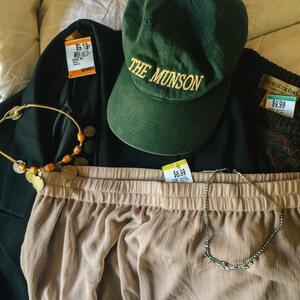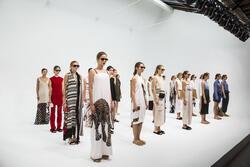Feminism: Lab Science Or Liberation?
The Juicy Couture Sweat Suit and Ugg Boots era was an iconic one for many-a middle school girl in my small California town. This was not something inherently bad; elastic and velour are a) warm, and b) comfortable, and cold feet are borderline oppressive in that they draw attention away from more important things (e.g. navigating through hormones and/or middle school drama). The more important things are not only lost to cold feet, but also to the collective identity that middle school girls tend to take on inadvertently through brand name clothing. Girls from the ages of 11-14 are assumed to be homogenous, and this perceived sameness is, more often than not, embraced; and thus, the Juicy Sweat Suit/Ugg Boot era begins.
I didn’t question this seemingly universal sense of self, achieved by most at my middle school, until freshman year of high school. Cohorts of other girls showed up on the first day of school in their newer and nicer name brands to accompany the new lease on life that high school seems to give you; I, however, was not in this group. Nonetheless, the collective identity brought on by middle school was effectively reshaped into a different monster, this time a patchwork beast made out of abject classism and conventional feminine constructs, fully realized in its restrictiveness of identity. I felt a need to conquer the beast. I often trace my interest in feminism back to my freshman year of high school, but really this is too early. I didn’t grow into feminism until I started thrifting.
Thrifting (as in, shopping at thrift stores) is something that I see going hand-in-hand with normcore; that is to say that it’s associated with dad jeans, funny t-shirts, and weird baseball caps from company events or bridal showers. However, thrifting is more than this aesthetic. For the young woman, a thrift store serves as the proverbial laboratory of feminism. The reactants: bits and pieces of people left behind in coat pockets and skirt pleats (the people, hopefully, being solely metaphorical). The product: a newly formed sense of self, or the ability to form said sense of self. The catalyst: feminism. Feminism is what provides the energy behind the idea that a woman is who she chooses to be. I was never so aware of all of the different people that I could choose to be until I was confronted with rows and rows of bits and pieces of other people for the first time.
Thrifting clothes is a cost-effective way for young girls to experiment with how they want to present themselves. Our visual aesthetic suggests so much of who we are: who we hang out with, what we’re involved in, what kind of music we like, where we’re from. The power to visually project some semblance of who we are internally is significant, and feminism’s consideration of every girl as her own individual, in essence, encourages the utilization of this power.
Making something new from something old, the idea of repurposing, is incredibly important to thrifting as it relates to feminism. Feminism has been aiming to make new things out of existing materials since its inception, really; applying old concepts in new ways is what led to things like suffrage and women wearing pants. Both voting and wearing pants had been integral, one could argue, to American culture since the country’s conception; the concepts were just never applied to women until feminists forced them to be. By crafting identities in thrift stores, young feminists can begin to apply the age-old idea of repurposing to themselves as a demographic that, due to marketing schemes and peer pressure, is so often generalized and lumped together.
This endorsement of thrifting is not meant to bash all of the girls in Juicy Couture Sweatsuits and Ugg Boots; this is not meant to demean the girls who show up to high school wearing name brands. It is meant to present thrifting as an alternative to what is expected. Feminism pushed me to choose my own identity through thrifting. I was driven to rebel against the box that all twelve to fifteen year old girls are placed in because feminism taught me that I could.
This piece was written as part of JWA’s Rising Voices Fellowship.







